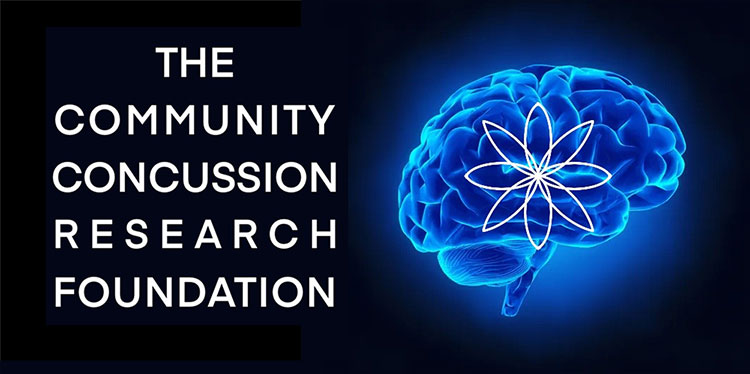Alarming Statistics & Educated Observations
Expert Opinion
Unless the AFL adapts the way the game is played at junior level it may not be sustainable. We need to demonstrate an abundance of caution for children’s health and safety.
CTE can cause memory and thinking problems, personality changes, aggression, depression and suicidal thinking, and in later life, dementia. But it can only be properly diagnosed post-mortem. Former AFL players Danny Frawley and Shane Tuck, who both suffered depression before their deaths, were diagnosed posthumously with CTE. A recent survey of brains of former sports players donated to the Australian Sports Brain Bank found that more than half of the brains – 12 out of 21 – had CTE. But the thing that is giving researchers and sporting groups pause is the potential for damage to children’s brains. Amateur sport at the junior level often sees head knocks and other injuries, but concussion protocols are often less strict and are less likely to be followed up. “I think it’s important to start looking at that group with a magnifying glass, because I think they have been seriously under-reported up until now.”
The chorus of concerned voices isn’t limited to researchers and parents. Legendary football players and coaches have shared their reservations about children playing tackle football. Even Super Bowl champion and NFL MVP quarterback Brett Favre has said if he had a son, he would be “very reluctant to let him play.”
Still, some parents hesitate to have their child play flag football in part because they believe players must tackle at a young age to have a chance at a college scholarship or professional career. But this is a myth. Tackling in elementary or middle school won’t make those odds any better or even ensure success as a high school player, but it will expose an athlete to years of repetitive impacts that increase the risk of long-term consequences for the brain.
Childhood and early adolescence are critical periods for building overall athleticism. Rapid brain maturation can provide a window of opportunity for developing co-ordination and motor skills that benefit young athletes in sports and throughout their lives. You can teach an athlete to tackle when they’re older, but childhood is a key time for fostering skills like agility, coordination, motor control, spatial awareness and quickness. There is no evidence that waiting to tackle will lead to bad habits or increase injuries when tackling begins.
Waiting to tackle gives young athletes time to build strength and athleticism before increasing the force and physicality of the game. Kids can still practice other football skills. As Superbowl MVP quarterback Drew Brees said, “Flag football promotes the passing game, right? So you truly develop a lot of those fundamentals, whether you’re a quarterback, running back or a receiver. And then as a defender.”
Waiting to tackle is ultimately a win-win. Athletes will incur fewer career impacts and less brain trauma while also reducing the risk for sustaining other injuries. And let’s be clear: this isn’t about waiting to play football. It’s about waiting to tackle. Tackling young won’t make an athlete a superstar. No one would say that any of these legendary players would have been better had they started tackling earlier in life. I encourage young football players to be like these NFL legends. Tackle can wait.
“There’s no such thing as a minor concussion,” says Alessi, who teaches at the UConn School of Medicine. In most cases, a single concussion should not cause permanent damage, but a second concussion, soon after the first, does not have to be very strong for its effects to be permanently disabling or deadly.” Children’s brains that are still developing and lack both the myelin sheathing that protects older brains and the developed neck musculature that helps older athletes avoid injury. Children are smaller and they don’t move as fast, so the force of impact is less, but they’re more vulnerable. We used to think if you let kids play full-contact sports, it will toughen them up — not true. The more contact you have, the greater the risk”.
“There’s also inadequate medical attention at those levels,” he says. ”No one wants collision sports to go away, Alessi says, but instead of striving to play harder, he believes we can strive to play smarter.
“You have to ask, what’s to be gained from high-velocity impact at a young age? The fastest-growing youth sport in America today is flag football. Archie Manning [former pro-football quarterback and father of Peyton and Eli Manning] didn’t let his sons play youth football. Tom Brady never played youth football. A lot of really good professional athletes in the NFL knew that they could build skill without getting hit. I think there’s a lot to be gained by us changing the rules”.
Adults have the liberty, freedom and free will to do whatever they want, but not children. Children have not reached the age of consent. In America today, participation in football has dropped drastically. In California, high schools are beginning to close their football programmes, because parents are no longer letting their kids play. Let people know you are not against sport, you just want to improve the quality of life for your fellow human beings. Players need to realise that these associations, the NFL or whoever, are not in business to provide healthcare. Their business is to provide entertainment, and make money. That’s their business. To tell them now that their players are suffering the health effects of playing, that’s not their business.
There were two papers that came out of Sweden, one in 2014 and another in 2016. Researchers identified 1.1 million children and they followed them for 41 years. They found out that if a child suffers just one concussion that brings him to the hospital, that child is more likely to die before the age of 42, especially through violent means; he has a two to four times increased risk of committing suicide as an adult; and is about two to four times more likely to suffer a major psychiatric illness as an adult, including major depression. He is more likely to have diminished intelligence and is more likely to be less gainfully employed as an adult. He is more likely to become a drug addict or alcoholic; and is more likely to engage in violent or criminal behaviour.
McKee: In all our studies we have about 20% of brain donors that have CTE that never had a documented concussion.
What we are seeing over and over is that the duration of exposure to football — the time that a person plays football — really increases the risk for CTE.
Ken Reed (interviewer): Do you think public schools should be sponsoring an activity like football that clearly is dangerous to the human brain?
McKee: No. It’s a school. And the whole point is to prepare students to be the most productive and successful people they can be in life. And we’re doing things that limit that possibility. It’s a huge problem. And I see that for colleges, too. I mean these are supposed to be institutions of higher learning and it’s almost the opposite for some people.
Ken Reed: I remember reading that you have an adult son. Did he play football growing up?
McKee: I do have a son. He’s out of school now. He never played football. And it had nothing to do with me. I was actually crushed that he didn’t play football. I thought “Oh my God, this is awful.” My brothers all played football. My dad played football. But with my son, it was his dad who thought football was a dangerous sport. My son was a goalkeeper in soccer and he luckily never had much head trauma. He never had any concussions or anything.
I really wanted him to play football but now I’m thankful he didn’t.
Ken Reed: So, I imagine that today you wouldn’t recommend that any youngster play football. Is that the case?
McKee: I can’t anymore. I just can’t.
A brain specialist, Michael Buckland, says banning kids from contact sport needs to be seriously considered to avoid brain damage. It comes amid growing research and concern about CTE (chronic traumatic encephalopathy) which again hit headlines after a study on former Richmond player Shane Tuck showed he had a severe case of CTE. Associate Professor Michael Buckland from the Sports Brain Bank told Neil Mitchell (3AW) evidence from America had shown a correlation between first exposure to head knocks to the eventual severity of CTE. He said the Australian sporting community needed to seriously consider altering the rules of contact sports until those participating were teenagers. Alarmingly, he said many people who had never even had a concussion may have CTE. “I would love to see football codes not only have a concussion policy but also a policy on CTE minimisation. I never saw CTE until I started looking at retired sportspeople”.
Twelve of 21 brains donated (post mortem) by players of sports prone to repetitive head injury that were assessed by the Australian Sports Brain Bank were found to have the degenerative brain disease chronic traumatic encephalopathy (CTE), and all but one brain showed some form of neurodegeneration, in findings to be published in the Medical Journal of Australia.
The risk of CTE accumulates over an athlete’s lifetime, so changing the rules for professionals is not enough. There is no reason for children to play adult forms of contact sport.
• “I have seen some devastating outcomes from kids who fail year 12 with sports concussion from two to three years prior”.
• “In soccer, we are seeing an uptake of banning heading before age 11 or other modifications, and the evidence suggests it should be modified in those under 18.”
The Brain Injury Association believes local players deserve the same level of care as those in the top tier AFL and AFLW competitions. “At that community level, quite often it’s volunteer coaches, it’s parents, so there isn’t that opportunity for them to actually have that education,” said the Association’s Deborah Byrne. “People probably think that because they’re not playing sport at that elite level that they may not sustain a concussion, but I’d suspect they’re at a much higher risk of sustaining a concussion.”
CTE can cause memory and thinking problems, personality changes, aggression, depression and suicidal thinking, and in later life, dementia. But it can only be properly diagnosed post-mortem. Former AFL players Danny Frawley and Shane Tuck, who both suffered depression before their deaths, were diagnosed posthumously with CTE. A recent survey of brains of former sports players donated to the Australian Sports Brain Bank found that more than half of the brains – 12 out of 21 – had CTE. But the thing that is giving researchers and sporting groups pause is the potential for damage to children’s brains. Amateur sport at the junior level often sees head knocks and other injuries, but concussion protocols are often less strict and are less likely to be followed up. “I think it’s important to start looking at that group with a magnifying glass, because I think they have been seriously under-reported up until now.”
03 9375 4225
Phone
pjess@pjaca.com.au
43 Fletcher Street
Essendon Victoria, 3040
03 9370 2197
Fax
PO Box 845
Essendon, Victoria, 3040

Contact Us
We are here to answer any questions or schedule a meeting. Please feel free to call our office or send an email using the form below.
